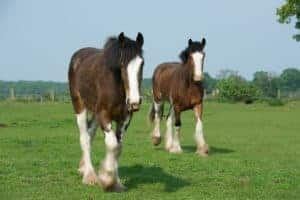What are Third Trochanter Fractures in Horses?
Ever heard of the horse’s third trochanter? It’s a part of a bone, and guess what: It can break. While not common, third trochanter fractures can cause almost instant, severe hind limb lameness that can be difficult to diagnose. But the news isn’t all bad: French researchers say these fractures probably won’t end a horse’s athletic career and generally heal without surgery.
“The third trochanter is a bony process that is neither a joint nor a weight-bearing surface, making these fractures far better tolerated in the horse,” said Lélia Bertoni, DVM, researcher and practicing veterinarian at the Centre d’Imagerie et de Recherche sur les Affections Locomotrices Equines in Normandy.
The third trochanter is located on the outside surface of the femur bone, about halfway between the hock and the hip. It’s called the “third” because there are two other trochanters: the “greater” trochanter (a large process at the top of the femur) and the “lesser” trochanter (a smaller process to the side of the top of the femur). A bony process is a perfectly healthy and normal bony bump that protrudes from a flatter bone surface. The third trochanter bump provides an insertion point for the gluteus superficialis muscle’s tendon.
Bertoni and colleagues recently investigated eight cases of third trochanter fractures in a first-ever review of the condition. They found that the significant muscle mass around the trochanter makes it difficult to see any kind of obvious physical manifestation of the fracture, such as swelling or even tenderness when touching it, she said. That same mass also makes getting a good X ray view of trochanter processes practically impossible without high-level machinery in a clinical setting. Further, there is no clear, characteristic lameness of a third trochanter fracture
Create a free account with TheHorse.com to view this content.
TheHorse.com is home to thousands of free articles about horse health care. In order to access some of our exclusive free content, you must be signed into TheHorse.com.
Start your free account today!
Already have an account?
and continue reading.

Related Articles
Stay on top of the most recent Horse Health news with

















